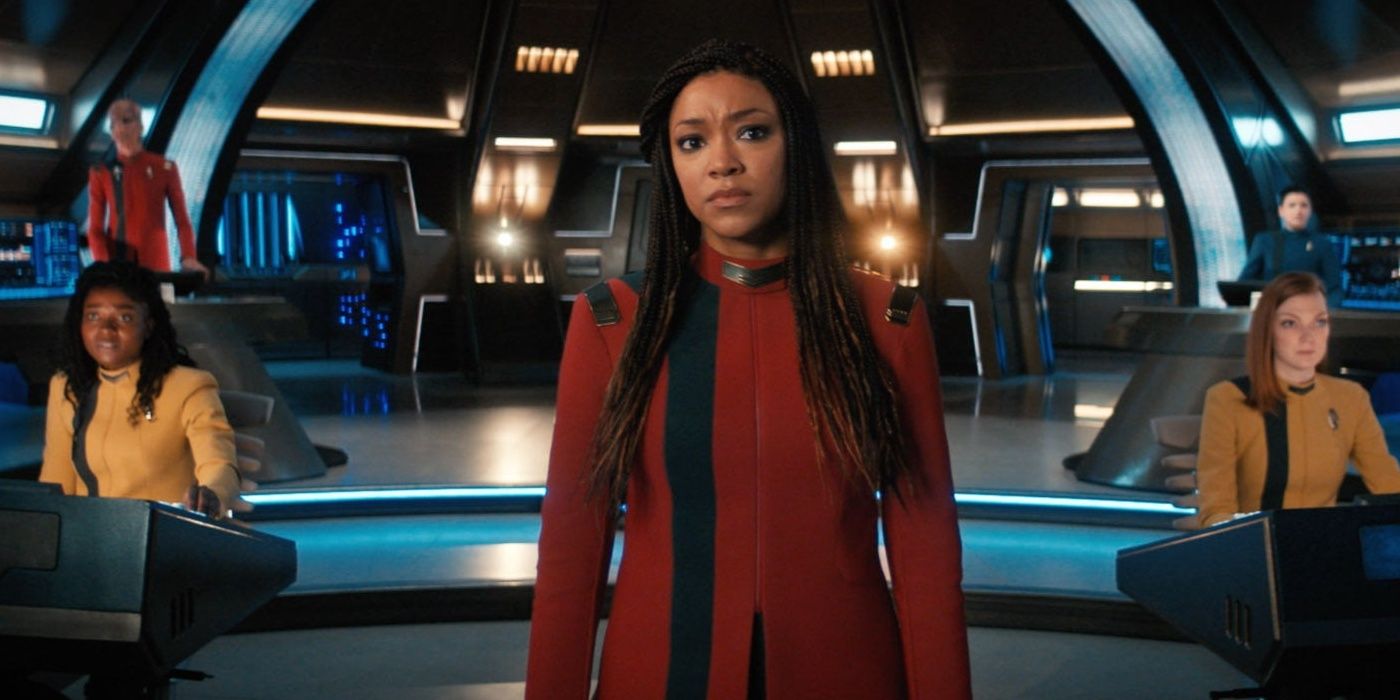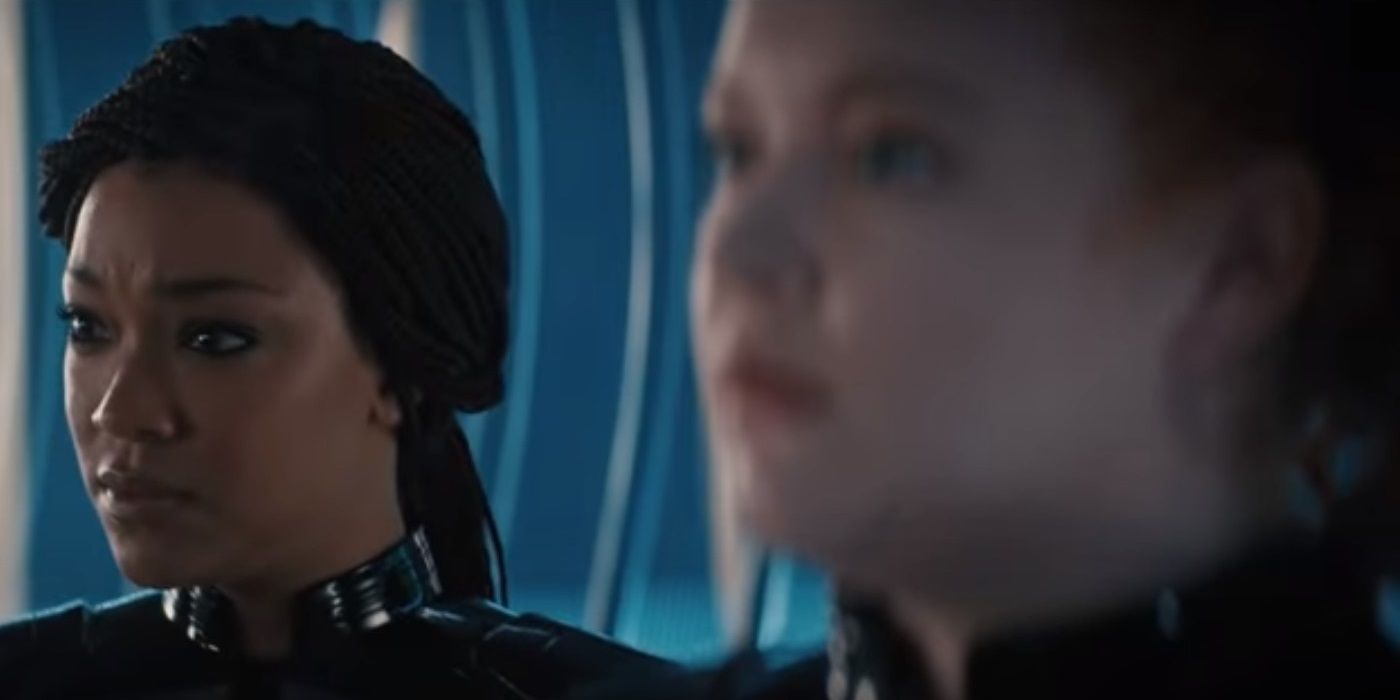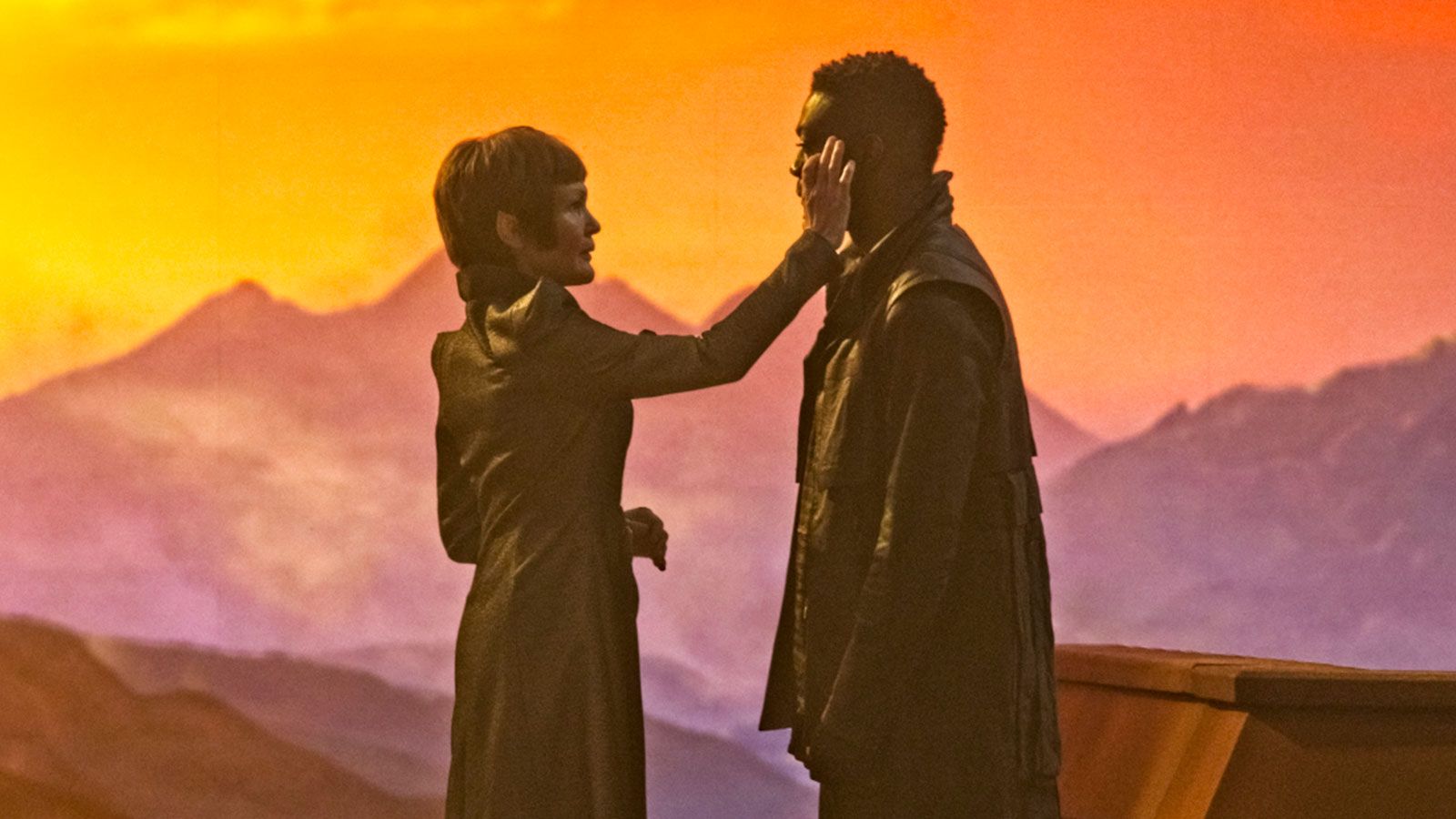WARNING: The following contains spoilers for Star Trek: Discovery Season 4, Episode 3, "Choose to Live," streaming now on Paramount+.
As one of the most iconic, groundbreaking science fiction franchises of all time, Star Trek predates many of its equally celebrated counterparts including Star Wars and Alien. Despite this, references and nods to other sci-fi properties have been featured between all three franchises over their lengthy histories, often as a self-aware allusion that subverts expectations based on where these references originated. The third episode of Star Trek: Discovery manages to put its own twist on both Star Wars and Alien in one fell swoop, playing on expectations effectively only as Star Trek could.
After numerous Starfleet shipments of dilithium to burgeoning alliances in the rebuilding United Federation are hijacked by a rogue Romulan warrior nun, the USS Discovery and the elite Qowat Milat, from the unified Vulcan-Romulan civilization, are tasked with tracking this culprit down. The search takes this joint mission to a remote moon where the thief and her small army of mercenaries have set up shop to elude the authorities while they plan their next heist. And to confront the thief, Captain Michael Burnham, Sylvia Tilly and Burnham's mother and Qowat Milat warrior Gabrielle Burnham beam aboard the moon to investigate this hideout together.
Shortly after arriving on the moon, the landing party discovers that the moon is no mere moon at all but a mobile station that has been in transit for some time, but its ship systems are failing and its engines are damaged. The rogue Qowat Milat utilized the stolen dilithium to power its systems. Unlike the Death Star, a similarly sized station resembling a lunar planetoid that was initially mistaken for a moon, this moon transports a strange cargo. Instead of a planet-killing weapons system, it's filled with rows of apparent sarcophagi not unlike the rows of eggs discovered by the crew of the Nostromo in the first Alien film, containing developing xenomorphs.
While Star Trek has loosely riffed on Alien before, with its claustrophobic, creeping terror including the memorable Discovery Season 1 episode "Context Is for Kings," this new twist provides something more in line with Star Trek's idealistic roots. Rather than being a collection of individual tombs or housing something sinister, the sarcophagi are actually cryostasis pods for an entire civilization traveling to a new planet after their original home planet had become uninhabitable. The Qowat Milat warrior was stealing the dilithium to keep the pods' life support systems active so they could survive the commute before the landing party repairs the engines and pods to ensure this civilization lives on.
Alien is perhaps the definitive franchise in sci-fi horror while Star Wars has veered into space opera fantasy. By contrast, Star Trek functions best when it explores the possibilities of the human condition in the face of the cosmic undiscovered country. The landing party's mission in tracking down a dilithium thief demonstrated how Star Trek can take the horror of the unknown and something that can be perceived as a planetary weapon and instead turn an interstellar manhunt into a mission of hope and compassion, providing a hopeful new future for an entire civilization. Alien and Star Wars are perfectly effective at what they do and Star Trek: Discovery has just crafted an example of how it can take elements from both to lean into its thematic strengths.
Star Trek: Discovery Season 4 releases new episodes Thursdays on Paramount+.



